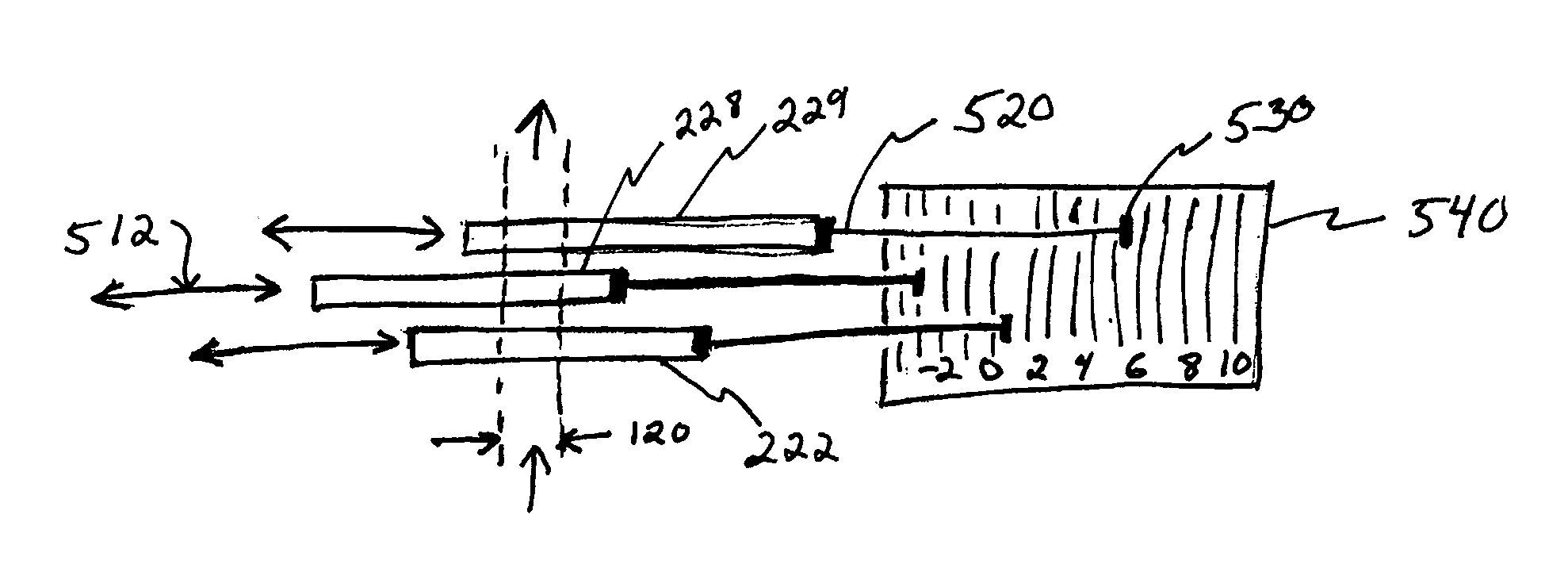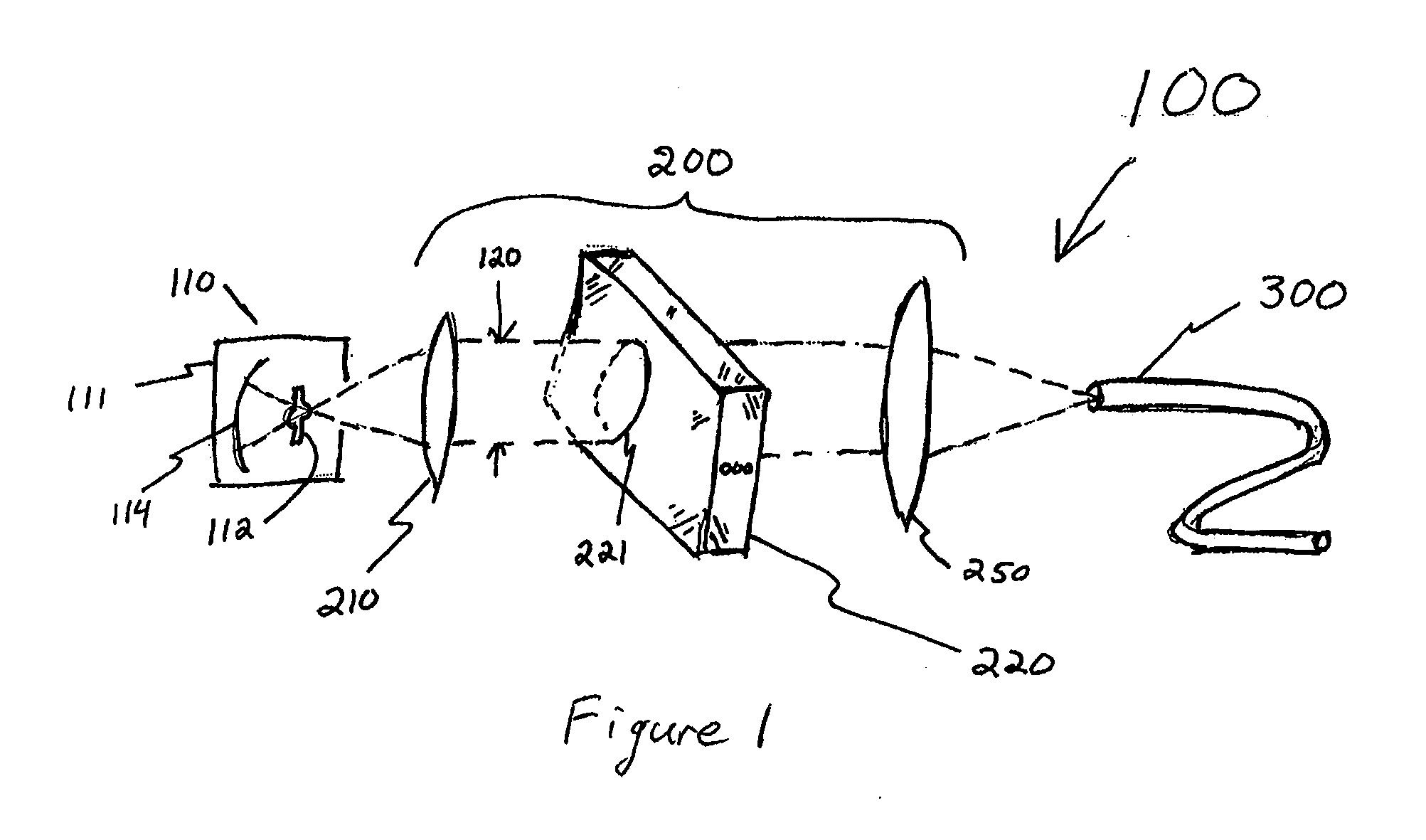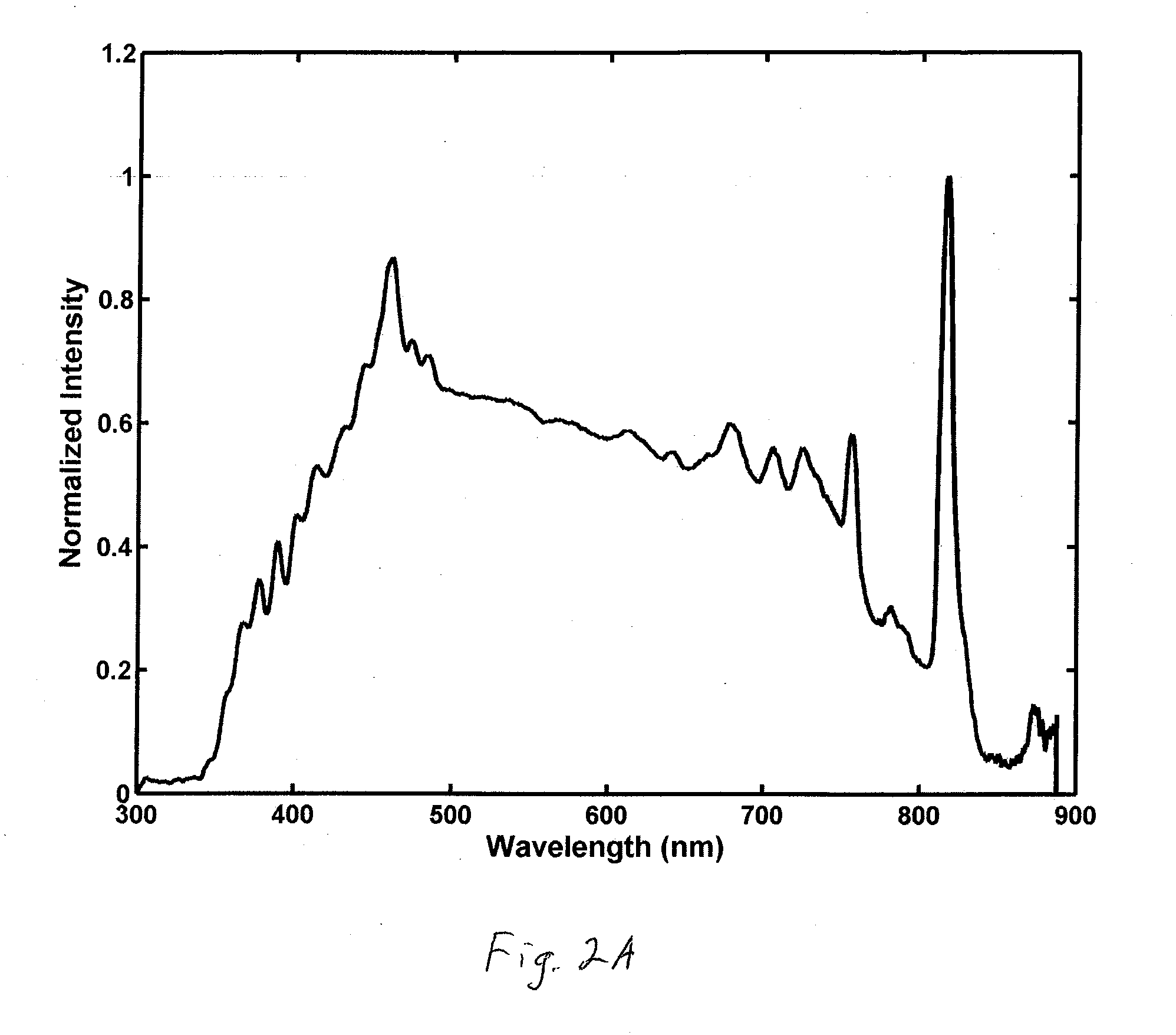Spectrally Controlled Illuminator and Method of Use Thereof
- Summary
- Abstract
- Description
- Claims
- Application Information
AI Technical Summary
Benefits of technology
Problems solved by technology
Method used
Image
Examples
Embodiment Construction
[0042]Referring to FIG. 1, an embodiment of the invention is an optical illuminator 100, which is typically used in optical experiments or in the measurement of the optical properties of a test object. Illuminator 100 comprises a source 110 of light and a bank 220 of optical filters. Filter bank 220 modifies the wavelength spectrum of source 110. Typically illuminator 100 also comprises beam forming optical elements 210 and 250 that match the beam parameters required inside filter bank 220 to the source 110 and to an output port, typically an optical fiber 300. For example, in the figure, element 210 is illustrated as converting an expanding cone of light into a generally collimated beam with beam size 120. The beam forming elements 210, 250 and the filter bank 220 form an optical spectrum equalizer 200.
[0043]Source 110 is selected to match the wavelength, power, temporal response and other specifications of the measurement or test instrument in which the illuminator is to be used. ...
PUM
 Login to View More
Login to View More Abstract
Description
Claims
Application Information
 Login to View More
Login to View More - R&D
- Intellectual Property
- Life Sciences
- Materials
- Tech Scout
- Unparalleled Data Quality
- Higher Quality Content
- 60% Fewer Hallucinations
Browse by: Latest US Patents, China's latest patents, Technical Efficacy Thesaurus, Application Domain, Technology Topic, Popular Technical Reports.
© 2025 PatSnap. All rights reserved.Legal|Privacy policy|Modern Slavery Act Transparency Statement|Sitemap|About US| Contact US: help@patsnap.com



